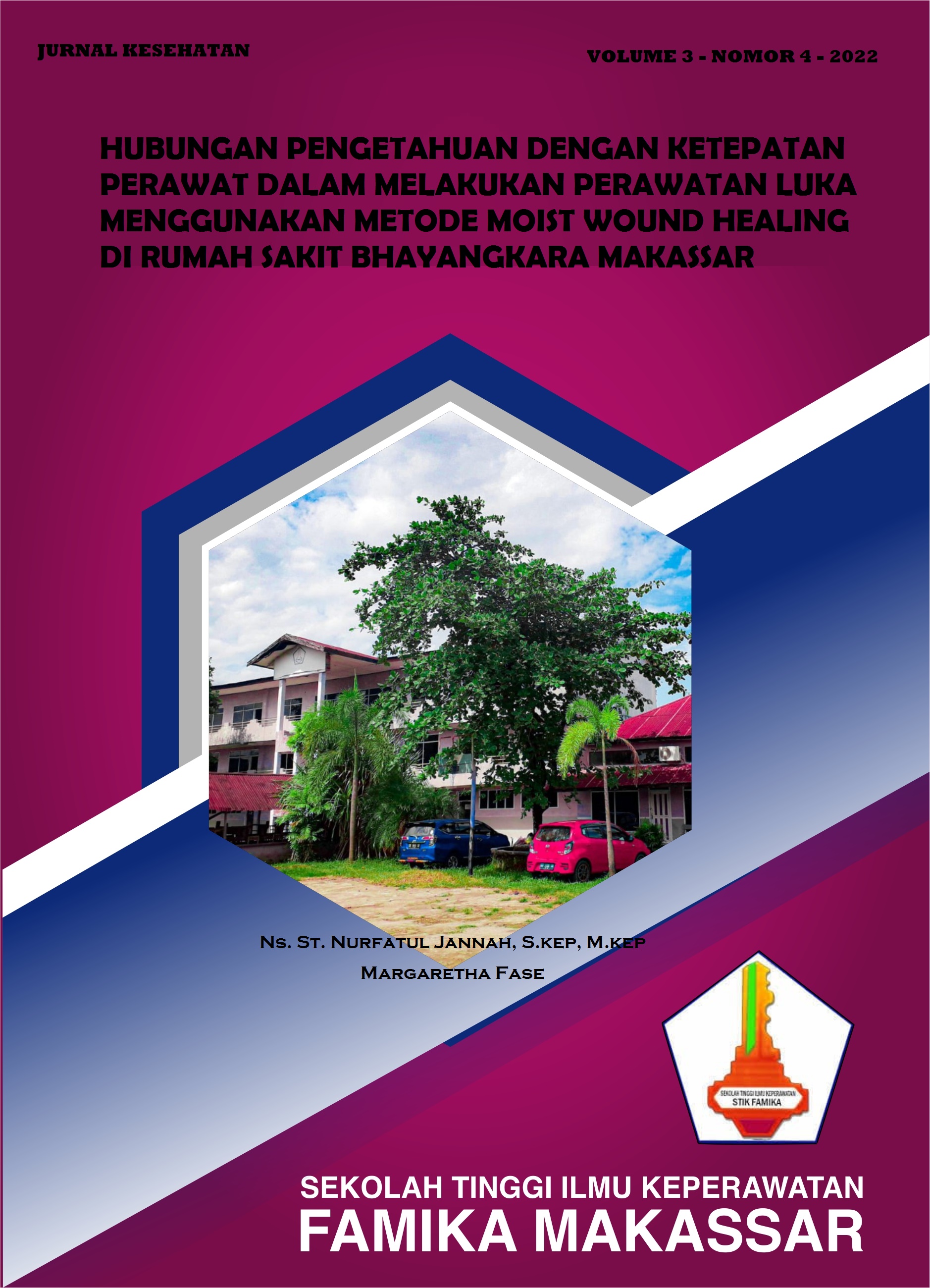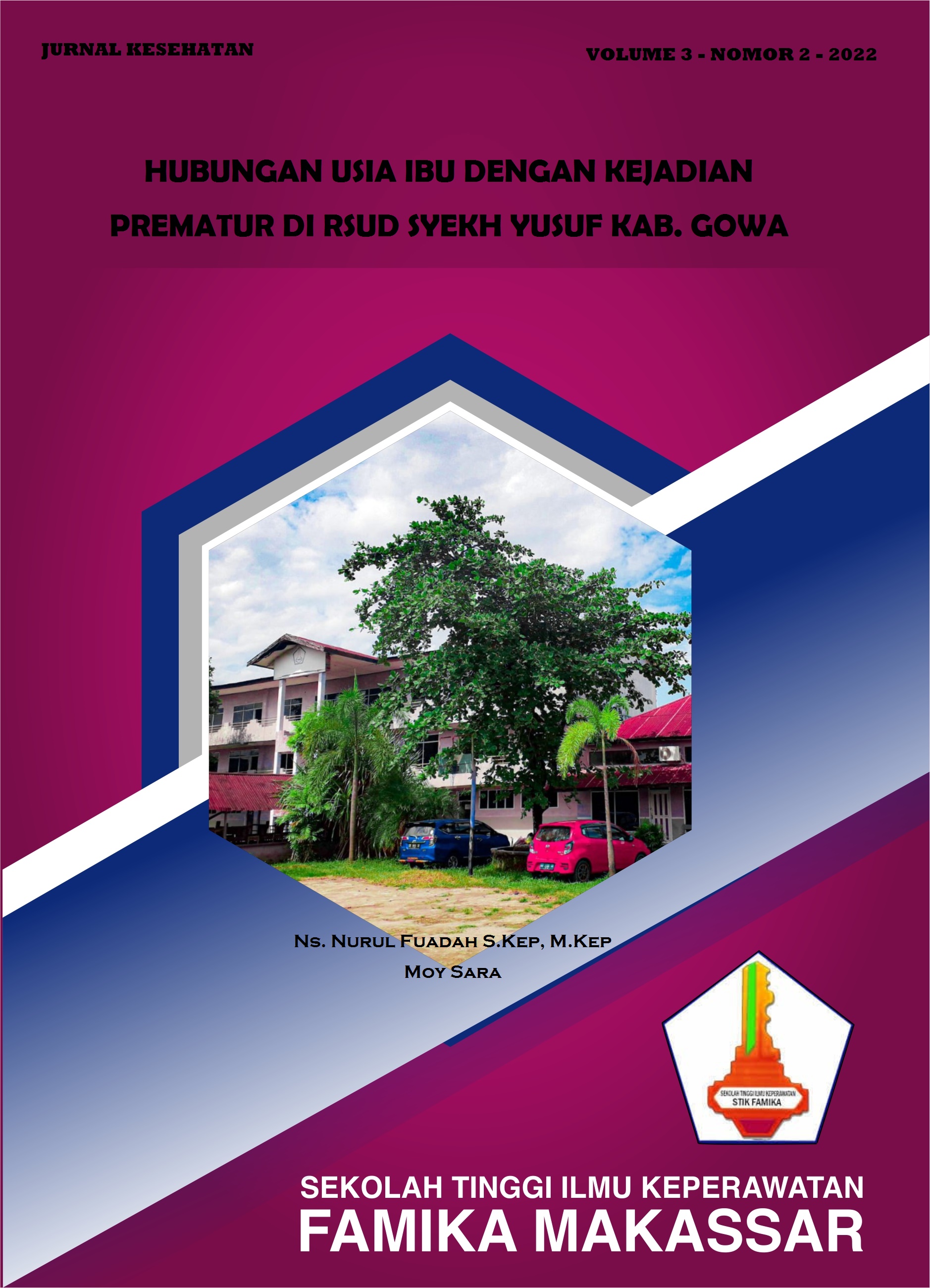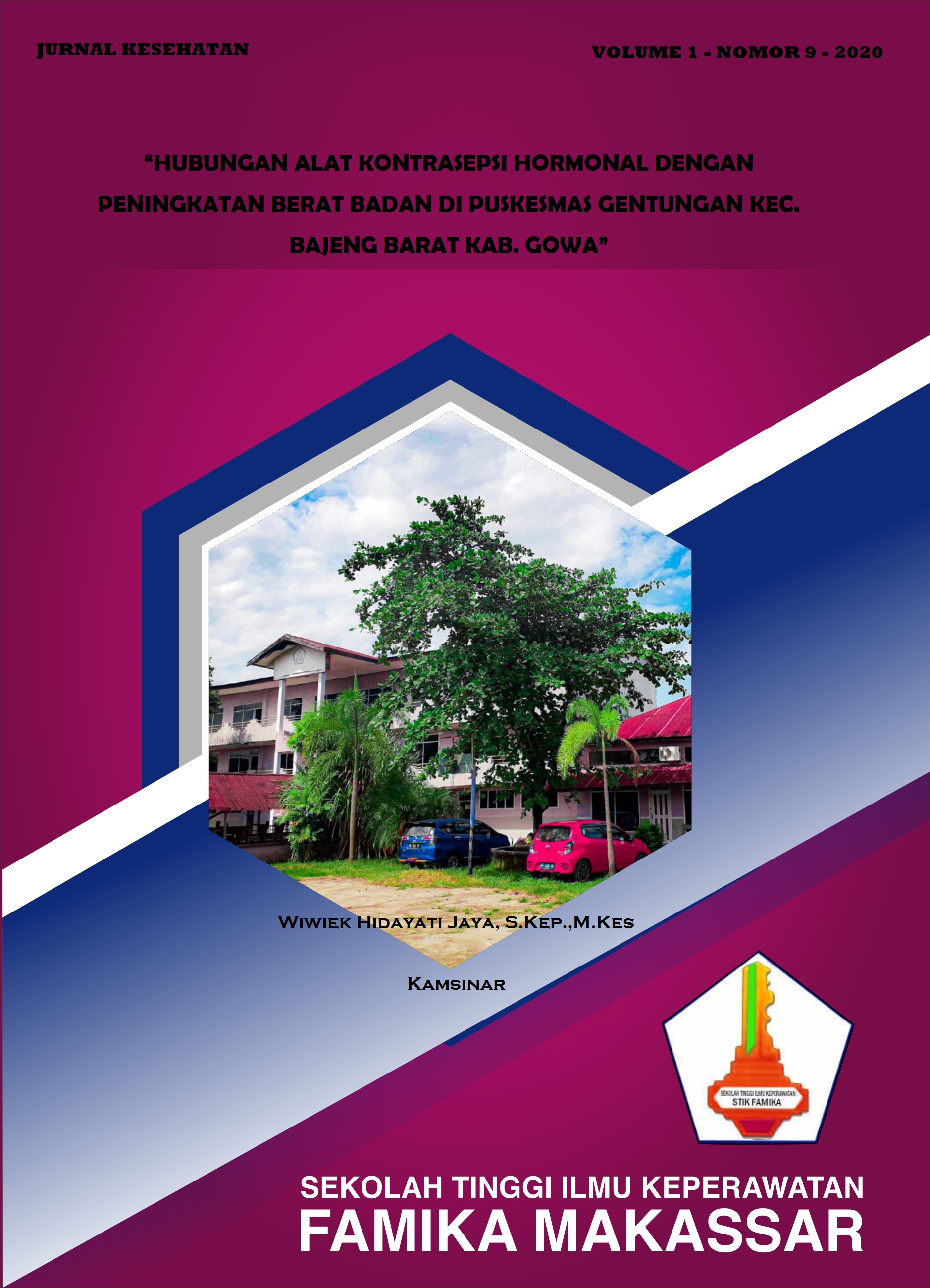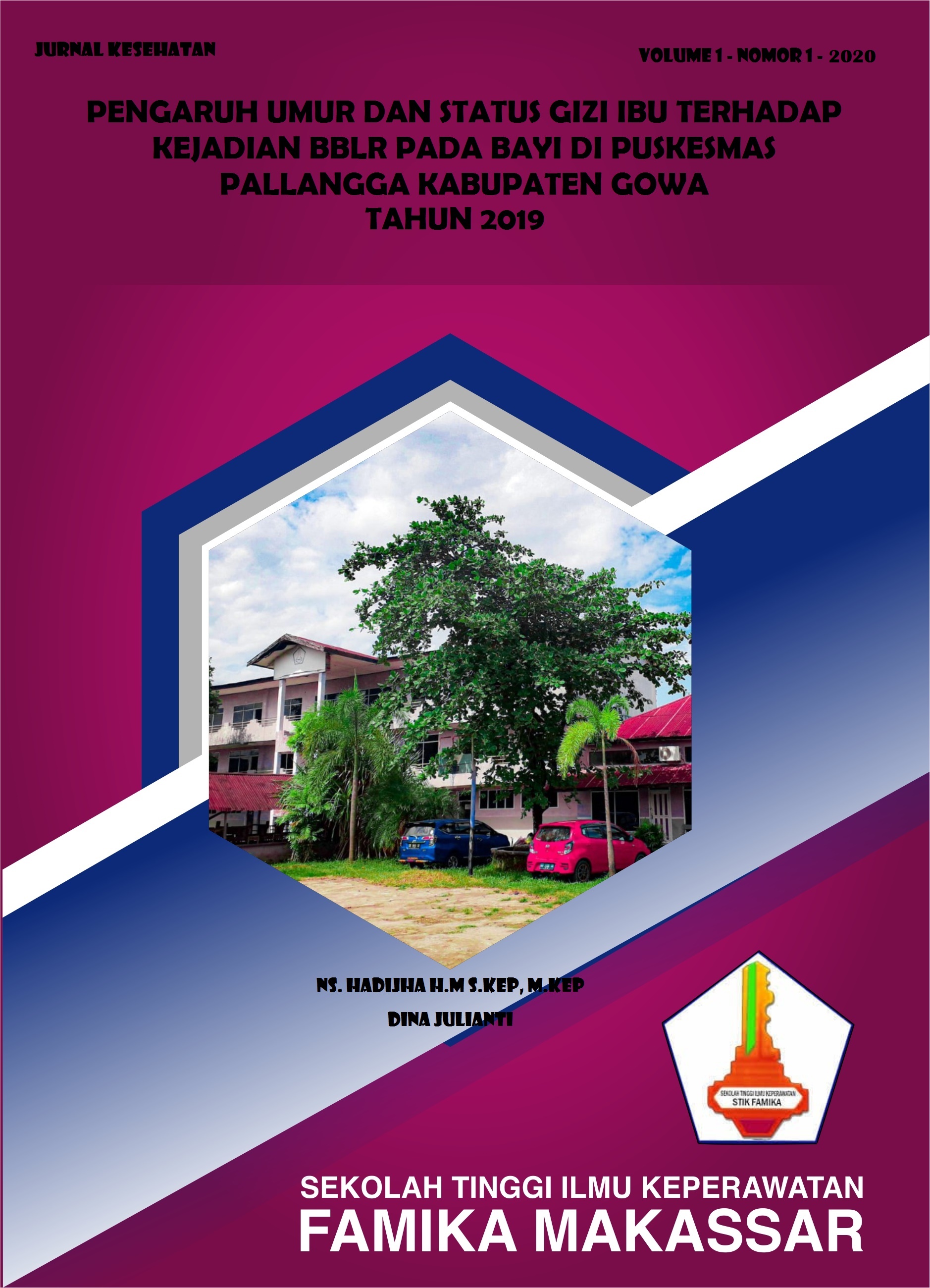Archives - Page 2
-

RELATIONSHIP OF KNOWLEDGE WITH NURSE ACCURACYIN DOING WOUND TREATMENT USINGMOIST WOUND HEALING METHOD IN HOSPITAL BHAYANGKARA MAKASSAR
Vol. 2 No. 04 (2022)Wound care methods develop along with the development of science and technology. This is marked by the emergence of modern wound care materials that have been designed according to the characteristics of the wound, so that the wound healing process is maximized. This study aims to determine the knowledge of nurses with the accuracy of modern wound care in the Maleo and Wren room at Bhayangkara Hospital Makassar. this type of research is to use a questionnaire and observation methods. the population in this study were all nurses in the Maleo and Gelatik room where the sample was taken using a total sampling of 31 respondents. The data obtained in this study is descriptive with a Cross Sectional approach and then completed in the form of a frequency distribution table accompanied by an explanation of the table. the results of this study indicate that of the 31 respondents who have good knowledge of modern wound care as many as 23 people (74.2%) respondents while those who have sufficient knowledge are 8 people (25.8%) respondents. it is known that the knowledge of nurses about modern wound care in the Maleo and Wren rooms of Bhayangkara Hospital Makassar is included in the good category.
-

RELATIONSHIP OF MATERNAL AGE WITH PREMATURE EVENTS IN SYEKH YUSUF HOSPITAL, KAB. GOWA YEAR 2020
Vol. 3 No. 02 (2022)The purpose of this study was to determine the relationship between maternal age and the incidence of prematurity in Syekh Yusuf District Hospital. Gowa. The design of this study was quantitative using an analytic survey method through a cross sectional approach in which maternal age was the independent variable and the incidence of prematurity was the dependent variable. The population in this study were all mothers who gave birth at Syekh Yusuf District Hospital. Gowa. With a sample of 67 respondents obtained by purposive sampling technique. The results of this study indicate that of the 67 respondents there are 43 (64.2%) respondents who have a risky age and experience prematurity, 4 (6.0%) respondents who are not at risk and experience prematurity, 6 (9.0%) respondents who have an age at risk and do not experience premature events, as well as 14 (20.9%) respondents who have an age that is not at risk and do not experience premature events. Based on the results of statistical tests using Chi Square with a significant level of = 0.05, the statistical test results obtained >2table or 26,998c>3,84. Thus, it can be said that Ha is accepted, meaning that there is a relationship between maternal age and premature occurrence in Sheikh Yusuf Hospital, Kab. Gowa. It is recommended to health workers to provide counseling before and during pregnancy so that it can be prevented and does not result in premature delivery.
-

RELATIONSHIP OF MOTHER'S KNOWLEDGE ABOUT PERSONAL HYGIENE WITH THE EVENT OF DIARRHEA IN TODDLERS
Vol. 1 No. 09 (2020)This study aims to determine the relationship between mother's knowledge about personal hygiene and the incidence of diarrhea in children under five at Bhayangkara Hospital Makassar. The design in this study is analytical with a cross sectional study approach using a questionnaire sheet of 46 respondents. Sampling by accidental sampling was then completed in the form of a frequency distribution table accompanied by an explanation. The results of the analysis of the relationship between mother's knowledge about personal hygiene and the incidence of diarrhea in children under five at Bhayangkara Hospital Makassar were from 46 respondents studied, there were 16 (34.8%) respondents who have a good level of knowledge, and there are 30 (65.2%) respondents who have a low level of knowledge. Of the 16 respondents with a good level of personal hygiene knowledge there were 10 (62.5%) respondents who did not experience diarrhea and 6 (37.5%) respondents who had diarrhea, while from 30 respondents with less personal hygiene knowledge there were 6 (20.0 %) respondents who did not experience diarrhea and 24 (80.0%) respondents who had diarrhea. The results of the statistical test in table 2 x 2 with the Pearson chi-square test assessment found = 0.004 and = 0.05 and a significance level of 0.05. < then it is stated that H0 is rejected and Ha is accepted. This means that there is a relationship between mother's personal knowledge and the incidence of diarrhea in children under five at Bhayangkara Hospital, Makassar

